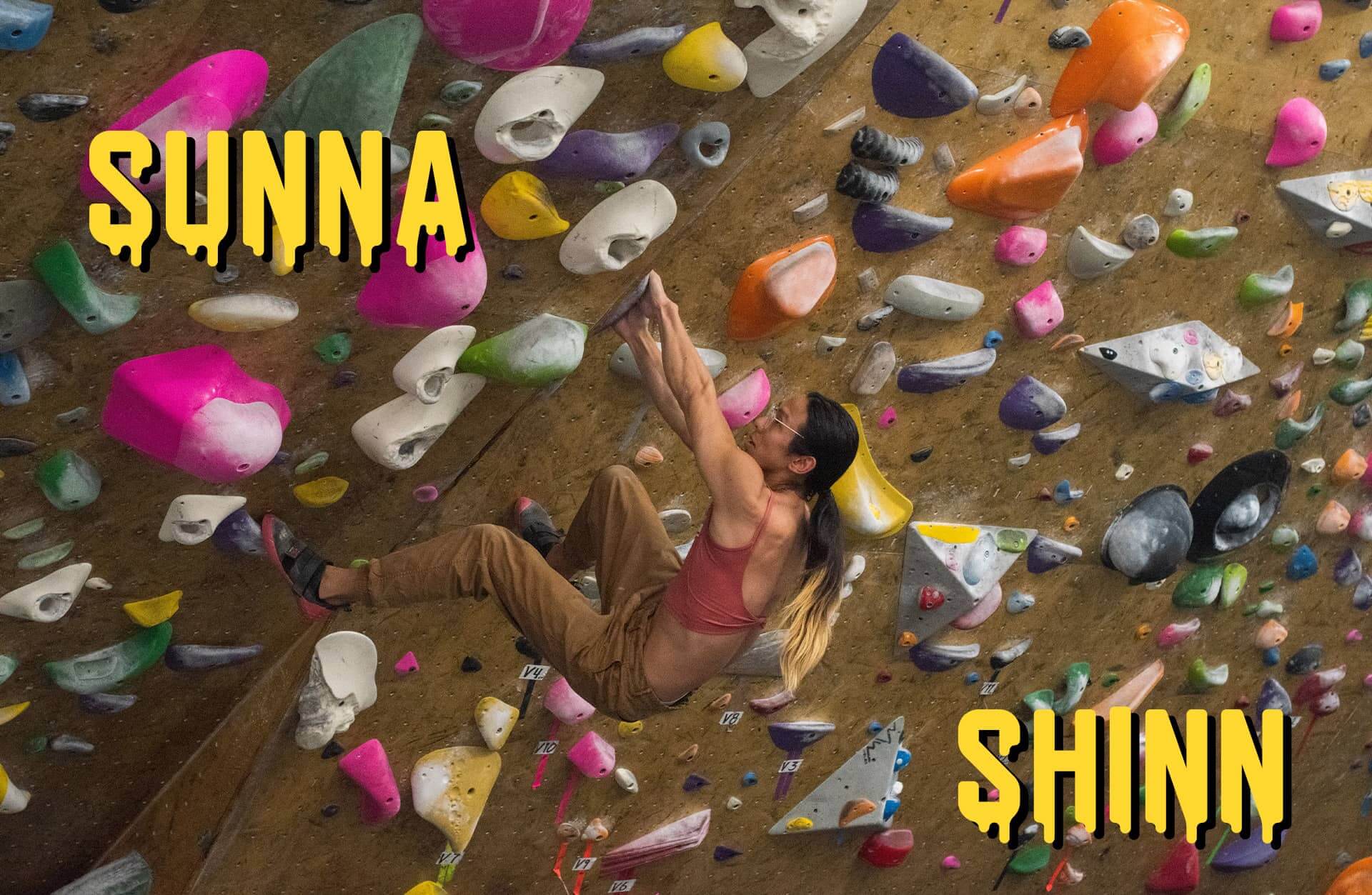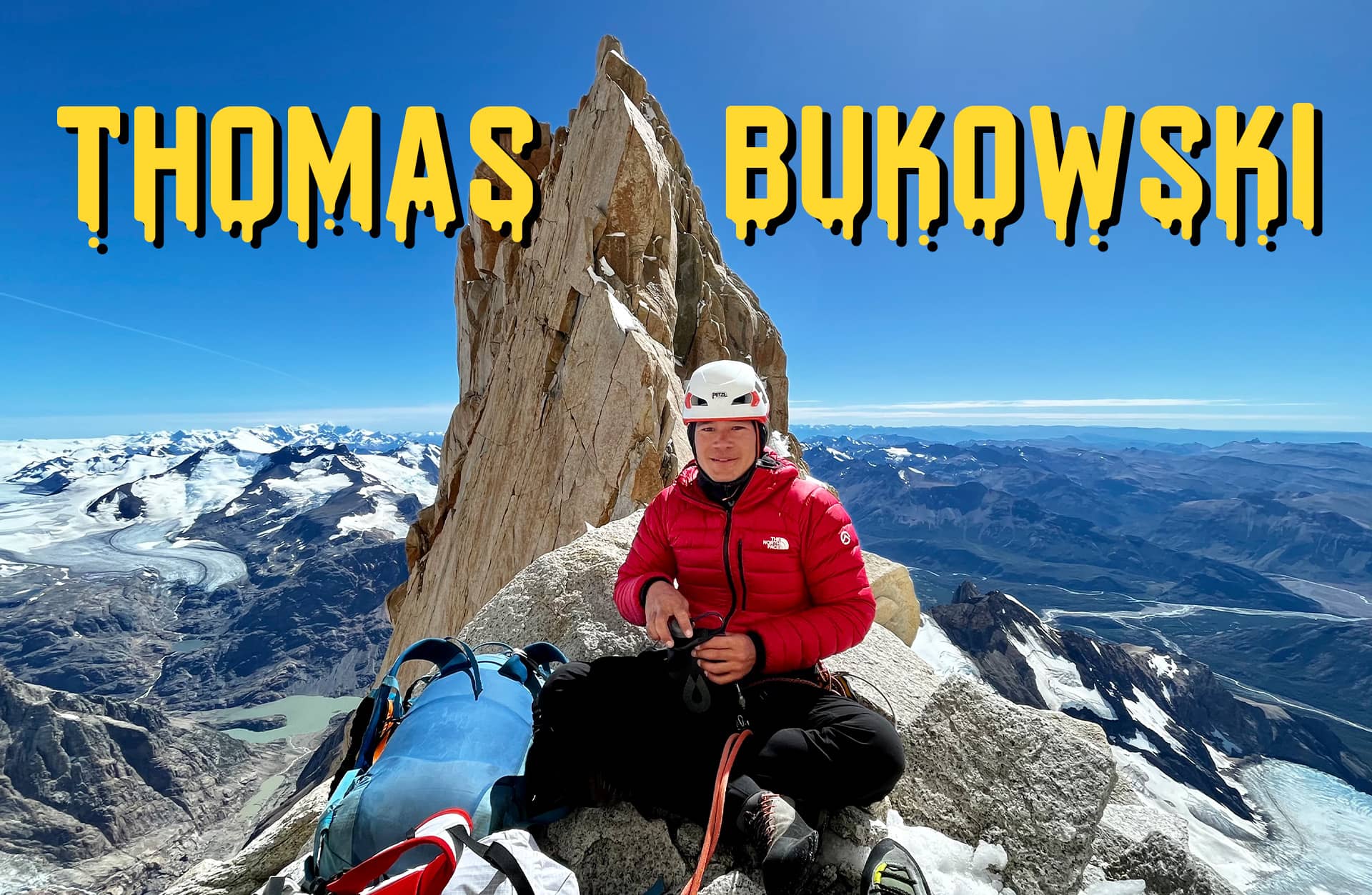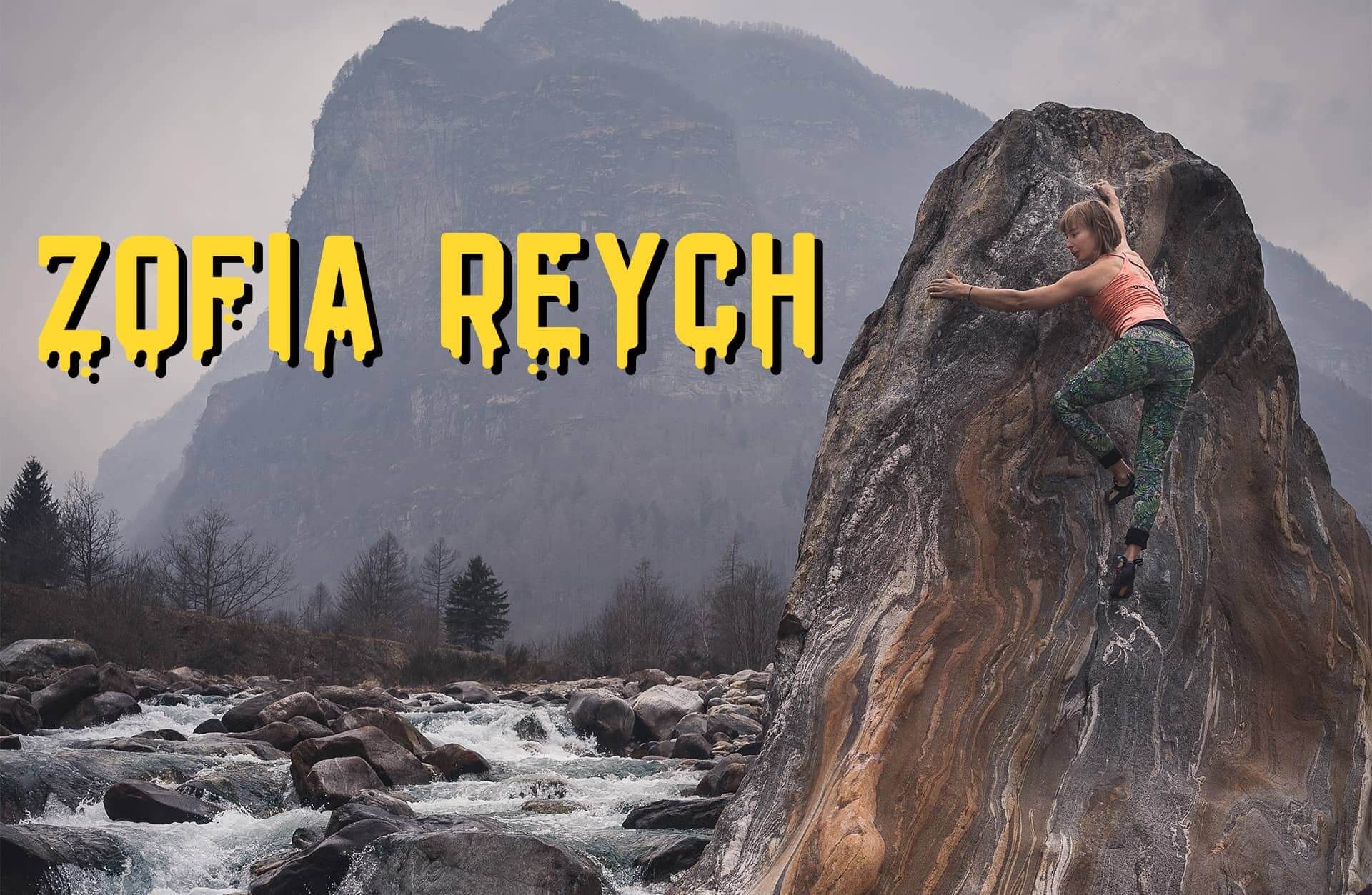CLIMB // 01 JUN 2024
THE SOURCE WITHIN
In many ways, climbing is the art of becoming accustomed to fear. A sketchy move on the crux doesn’t ever change in difficulty, but what does change is a climber’s assurance in themselves and their ability to move within that fear. It’s a skill korean-vietnamese, non-binary climber Sunna Shinn finds value in both on and off the wall. “It’s important for me because of my gender expression, who I am living in New York, and being in very public spaces all the time,” explained Shinn. “I needed to find a way to face fear in a safe environment so that I could use those tools I gained to face fear in an unsafe environment. Because I never want to be in a place where I’m completely frozen by fear.”
Shinn learned to face fear head on long before they touched their first climbing hold. Growing up in a sheltered religious environment, they were rarely exposed to queerness and didn’t personally know anyone openly queer until their mid-20’s. They explained, “Being able to find identity outside of what had been prescribed to me for so long has been very, very scary, but also very freeing.”
Reflecting back, that escape from the matrix now seems inevitable as they said, “I distinctly remember crying and listening to ‘Reflection’ from Mulan. Singing along and I was so deeply moved by it, but I didn’t necessarily know why. The specific line of, ‘Who is that girl I see staring straight back at me? Why is my reflection someone I don’t know?’” They laughed, “I think it’s a little tongue and cheek for who I am now and how my life played out.”
Learning to climb and unraveling gender were parallel processes for Shinn. “As I was learning things about my body, I was learning about climbing. Climbing was a way [for me] to explore fluidity at the same time.”
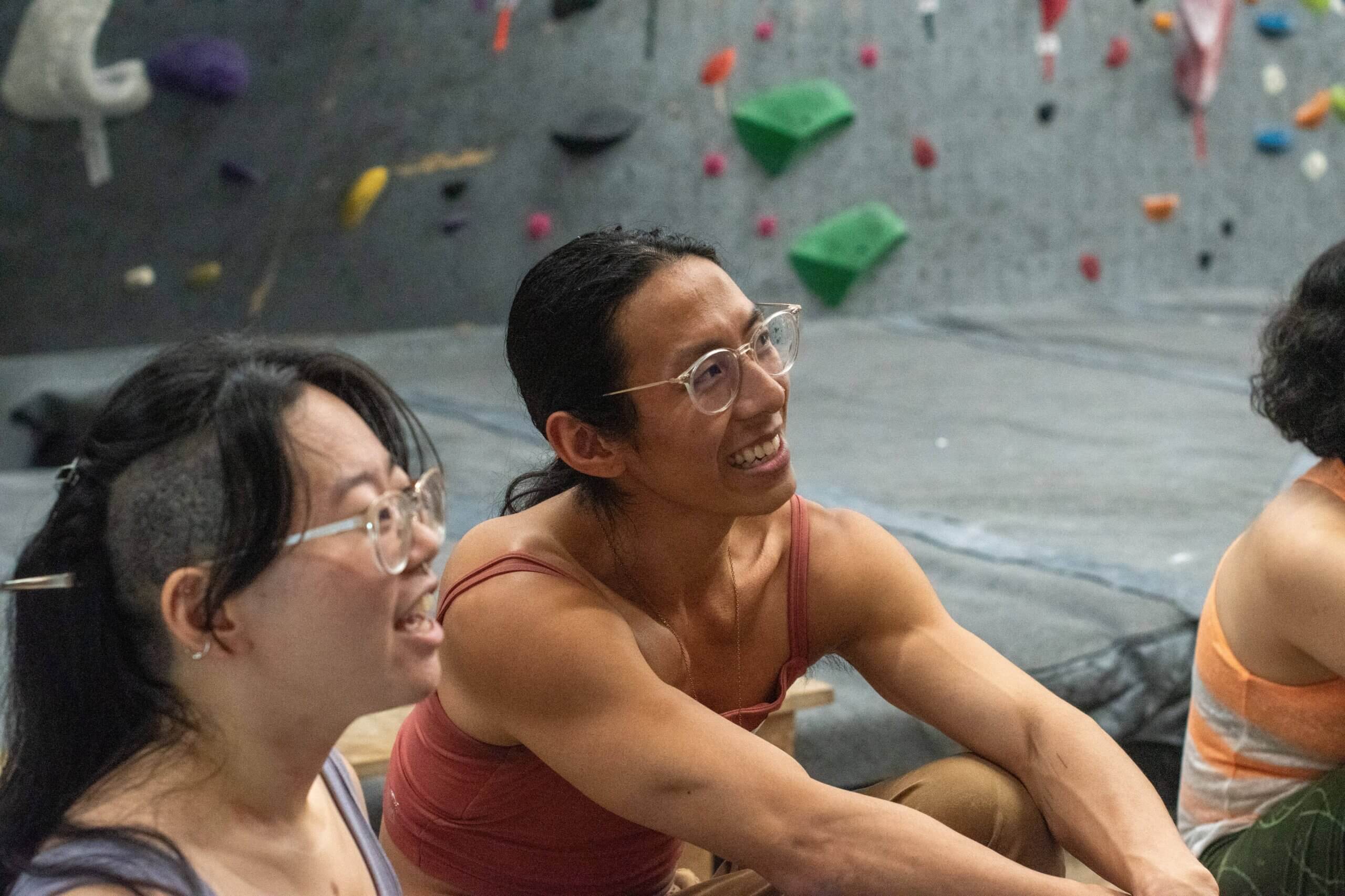
Movement had always been a large part of Shinn’s life as they explained, “I love a lot of sports. I did a bit of snowboarding growing up. Surfing is fun, but it’s cold. I think movement itself is one of my favorite things about having mobility. [Those] sports where it’s very dependent on understanding micro-adjustments and seeing how your body feels and moves are very fun and satisfying for me. Climbing is obviously at the top of that list.”
“It all started very nonchalantly. The classic: my friend invited me to go climbing,” they chuckled. “We have this outdoor gym right under the Brooklyn Bridge, and that first day I climbed whatever I could. I was just scrambling up walls. I had so many flappers. At that time I was a barista, and the day after climbing, that pump was so real. I was in so much pain. My hands were shaking and I couldn’t lift any milk jugs.”
They grinned, “I had so much fun.”
Butter Mag is a 100% reader supported publication. By subscribing to Butter’s Patreon for as little as 2$/month, you keep Butter churning, so that together we can create a more diverse outdoor sports community.
After that fateful first climb, Shinn just kept going back to the gym. However due to the outdoor facility, the gym shut in October for the winter. Having just started in August, Shinn got just enough of a taste to be fully hooked. As the most budget friendly option, Shinn swore to hit next season full force when the gym opened and settle for daydreaming about climbing in the meantime. Then it was 2020.
However Shinn’s stoke for climbing stood the test of time and once the local gyms opened up again, they were right back on the wall. “That’s where everything evolved and climbing really took its place in my life.”
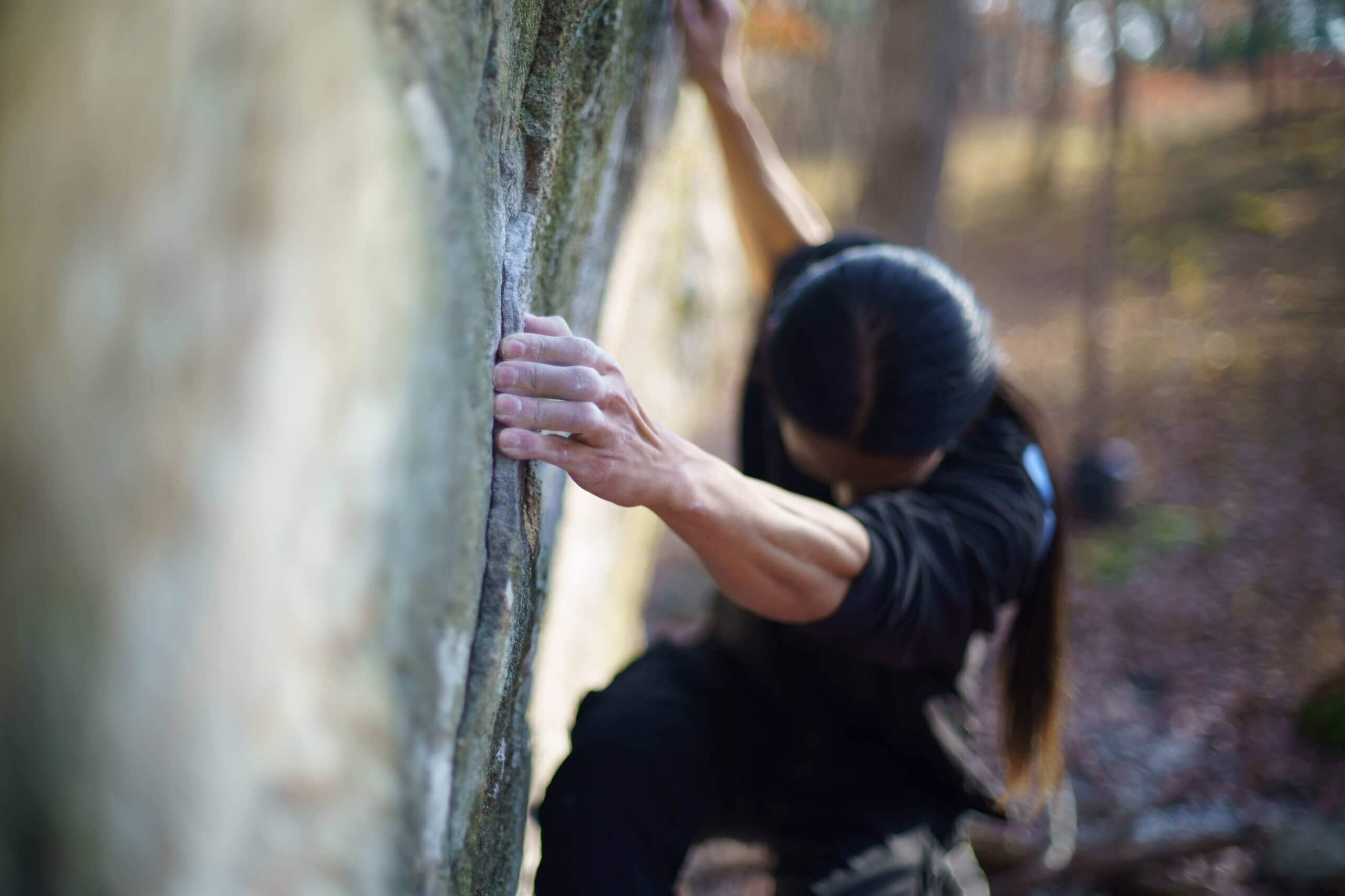
In the early days of their climbing journey, Shinn managed to bypass a majority of potential toxic masculinity by climbing hard. They explained, “I had a lot of privilege going into it. I had a lot of genetics that helped me progress quickly. And in sports, above all things, people respect strength. Specifically the ability to do the thing. I think if I wasn’t a stronger climber, people would be less receptive to who I am because they’re like, ‘Oh shit, well who am I to talk if they’re climbing harder than me?’”
“Obviously that’s a problem, but for a while in the beginning, I was like, I’m just going to be as strong as I can so they have to respect me.”
The more Shinn climbed, the more they were able to build a community that welcomed Shinn with open arms. No minimum climbing grade required. “I think the climbing community is very centered around building a sense of community with each other,” they said. “In climbing you aren’t dependent on other people in the same way as team sports. When you do depend on other people, you’re literally putting your safety in their hands, whether that’s spotting or belaying. Across the board, you can feel there’s a sense of camaraderie that goes on. [So once] I built a lot of trusting relationships, I felt comfortable moving into [the climbing space as a non-binary person] with more courage. Knowing that the people I surrounded myself with wouldn’t put up with any shit. I had a whole army of people behind me.”
Enjoying this article? Consider subscribing to our Patreon for as little as 2$/month to ensure we can keep sharing more stories like this in the future!
With their army, Shinn could unravel their relationship to their femininity. “In the beginning, it felt very scary because of the [negative] emotions [that can be] elicited when someone like me, AMAB (assigned male at birth) encroaches into what people consider femininity,” they said. “But a big portion of moving from a traditionally masculine space into a more traditionally feminine space is understanding that you are relinquishing your sense of security and safety that you had as a man because of how society operates.”
Along with a feeling of safety within a supportive community, Shinn found more satisfaction climbing with people that approached the wall with a similar mindset. “For me, the send is not the most important part,” they said. “Once I’ve figured out the problem, worked through the moves, it doesn’t matter to me that much if I can do the full thing in one go. I like to find those satisfying positions. I like to feel that tension. I like to be able to find balance in a tricky situation. Building that body awareness has been centric to who I am. The body I have, the body I work with, the more connected to it I am, the more I feel like me. Being present in my different limbs and the structure of my body, that feels like queerness to me.”
This practice of prioritizing presence becomes clear in Shinn’s climbing style in which they seem to just float up the wall. This flow stems from Shinn’s meditative approach to the wall. They explained, “The way I approach climbing is more centered on finding rest than finding effort. When you’re on the wall, it’s like breathing. You have to find that cadence. You get this wave of effort and then relaxation, effort, relaxation. You’re able to move through the climb a lot more efficiently, but also it feels better.”
With this mindful approach to climbing, it may come as a surprise that Shinn is scared of heights. “Yes. The math is not mathing,” they laughed. “I am terrified of heights, even on top rope. But climbing for me has been a really helpful exercise in being able to confront fear in a relatively safe environment. You’re able to then feel fear and still move through it and do the things you need to do.”
That ability to face fear has created an abundance of room for growth for Shinn, in climbing when they worked for their Lead Certification, and in their relationships by practicing something even scarier than climbing. Vulnerability.
“Vulnerability comes with a lot of pain, rejection, fear, and all these different things,” explained Shinn. “Once you’re able to practice, and understand that while things might not turn out the best, on the other end of the spectrum is how fulfilling and nourishing a relationship can be once you have those moments of vulnerability – the rewards heavily outweigh the risks.”
Shinn combines that vulnerability with tenderness and compassion to build a welcoming community both in person and online. They reflected back to when they first started sharing their sends on Instagram. “Starting my own gender journey, trying to figure out what gender meant to me and all those things, I didn’t see anybody like me. There’s no queer climbers that are visible. Where are they? I guess I’ll just start posting and see what happens.”
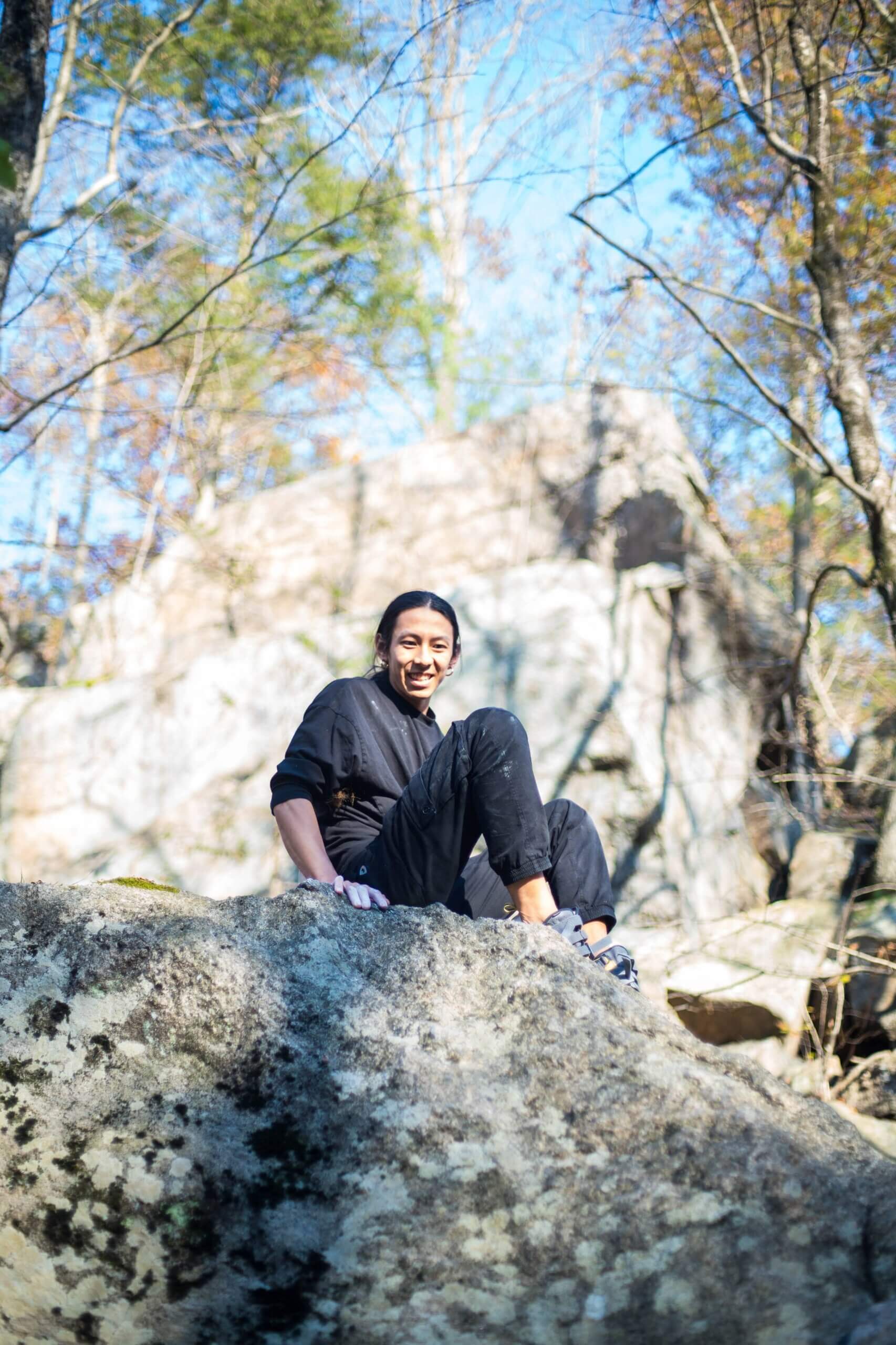
“I wanted to be that someone I was looking for,” they continued. “There’s a large sense of fulfillment that comes with [creating that online community]. It makes me very excited to know that other people [can see] someone that is going along the same path, experiencing some of the same struggles and overcoming some of the same obstacles. Being able to bring exposure to people that don’t have it. Showing them that this is normal, this is just one of the many small facets of being human.”
Part of that exposure includes expanding the image of what non-binary looks like. “The image for non-binary is this timid small being that doesn’t take up much space, but we’re so expansive. We have this whole range of fluidity,” explained Shinn. “It’s fun [for me] being able to lean into muscle femme. The idea that muscle equals man, but long hair equals woman. Softer demeanor equals woman but then something else equals man. The games are very fun in a way to create a cognitive dissonance for people. Experiencing a lot of masculinity or experiencing a lot of femininity or experiencing things outside of a traditional binary, it feels very fun.”
Looking forward, Shinn wants “to build community, enjoy it, and have a sport that I love for a long time.” Using vulnerability as a launching point to build relationships, they’ve found joy in teaching others from their labelless mindset, “hammering in the fact that everything is so situational. How do you assess what the problem is, how can you use your experience? How can you use that to your advantage and match that with the things that you’ve learned?”
They continued, “My ethos with climbing is that I want to get as much enjoyment and satisfaction that I can out of it. I focus on the things that my body can and can’t do. Everything is dependent of me. It’s parallel to queerness in that I dictate the narrative. I determine what I am, who I am. I find and pick things that align with me, not the other way around.”
A smile crossed their face. “I’m the source.”
